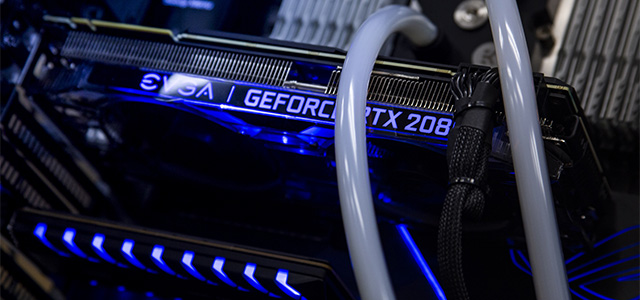
One of the bigger releases scheduled for 2019 is PCIe 4.0. Replacing PCIe 3.0 which was the standard for almost 10 years is a big task, but how do the two really compare? What are the key differences in terms of speed, bandwidth, and overall performance when comparing PCIe 4.0 vs. 3.0? Read our full breakdown to learn more.
Due to embargoes and information provided under NDA that we’re privy to, we can’t provide all the information we’d like to at the time of this writing, but we’ll post updates as necessary.
What is PCIe?
PCIe stands for Peripheral Component Interconnect Express. It’s the current serial expansion bus standard on all motherboards used universally for components like GPUs and expansion cards like USB hubs, RAID cards, wifi, and newer storage drives. Depending on the motherboard model, chipset, and number of PCIe lanes supported by the selected processor, a PC motherboard will have an assortment of x16, x8, x4, and x1 PCIe slots for adding these expansion cards.
How fast is PCIe 4.0 vs 3.0
Since PCIe is the standard for connecting graphics cards, it stands to reason that a faster bus speed would result in better graphics performance (as well as increase the performance of any other installed expansion cards). But how much faster will PCIe 4.0 be vs. 3.0? Well, from a pure numbers standpoint, Bandwidth and Frequency are both doubled with 4.0 – from 32GBps to 64GBps bandwidth and 8.0GHz to 16.0GHz frequency. It’s important to keep in mind though that these numbers don’t mean your next PC will automatically be twice as fast. Until components which potentially utilize that additional speed and support the new standard like storage and GPUs become available simply with faster bus speeds.
| Bandwidth | Frequency | |
| PCIe 3.0 | 32 GBps | 8.0GHz |
| PCIe 4.0 | 64 GBps | 16.0GHz |
When will PCIe 4.0 be released?
AMD has acknowledged that their next generation of Ryzen processors will support PCIe 4.0 but it will still be up to each individual motherboard vendor to decide whether to include the feature. Our suspicion is that it will be included on higher end boards for that Ryzen launch later this year…whenever that might be exactly. Intel would be likely to follow suit with their next major release.
When will PCIe 5.0 be released?
Rumor has it that PCIe 5.0 may be close on the heels of 4.0, coming out as soon as later this year and effectively doubling the bandwidth and frequency speeds again. Don’t worry about being left out of this one, though. We’re still years away from the availability of mainstream devices designed to utilize this type of throughput capacity. We expect that PCIe 5.0 will be relegated to server and HPC environments with specialized components for the foreseeable future.
Should I upgrade to PCIe 4.0 immediately?
Remember, the availability of the additional bus speeds are only one piece of the puzzle – until devices to take advantage become available at some point in the future, you won’t see the benefits in your hardware. So sure, if you find yourself in the market for a new PC after PCIe 4.0 becomes available, it’s definitely a spec we’d recommend. But otherwise it’s not worth the expense of a new motherboard and processor until those higher capacity components become available.
Josh Covington
Latest posts by Josh Covington (see all)
- What is CUDIMM? - January 29, 2025
- X870 vs B850: Choosing the Right Motherboard for Your Build - January 17, 2025
- How Much Power Supply do I Need? - January 15, 2025